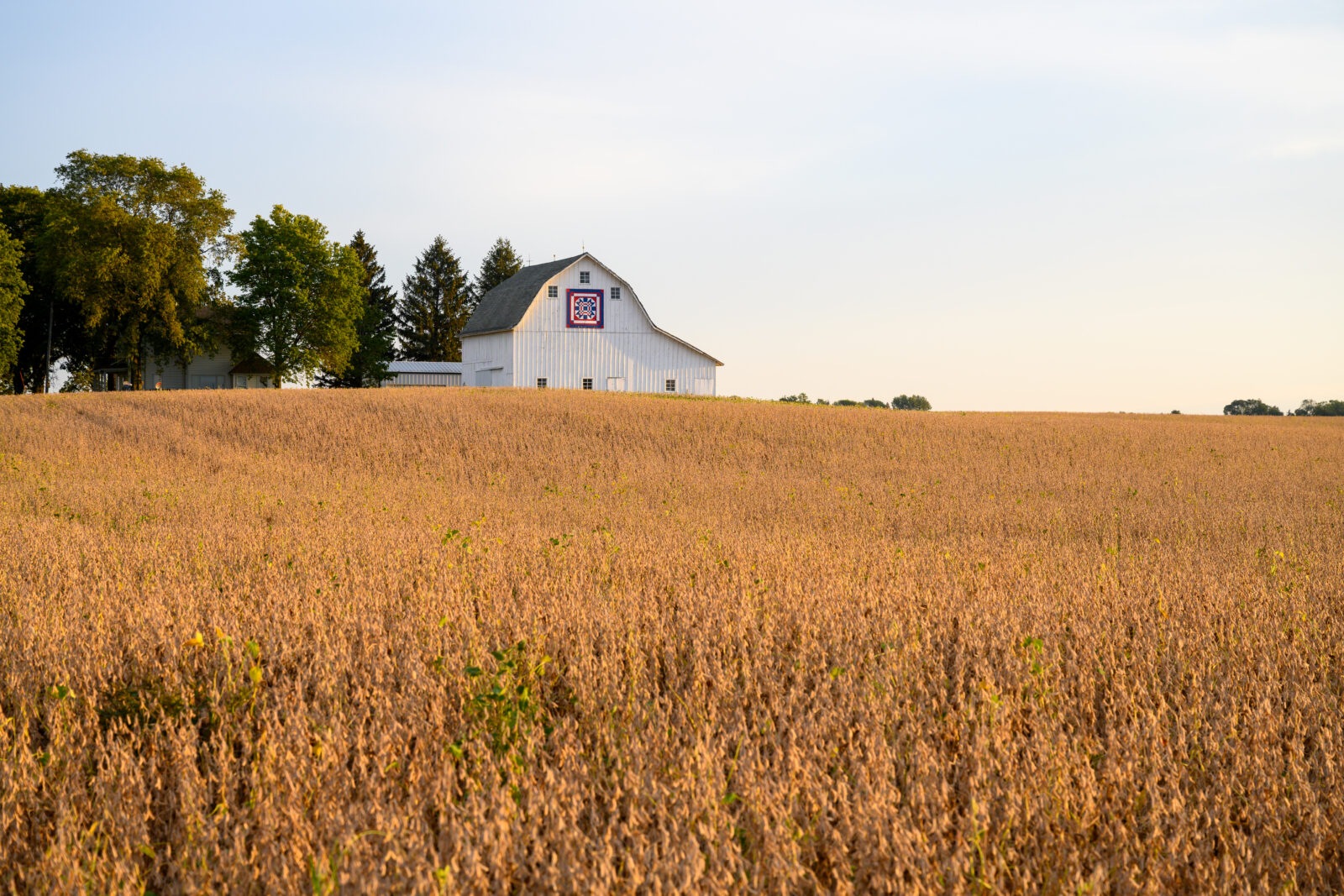As a civilization, we have grown crops and managed farmland for thousands of years. And we have gradually become more efficient and proficient in what we grow and how we grow it.
But as the world edges towards 9.7 billion people by 2050,[1] the agricultural sector must continue to innovate and find new ways of working to secure our food system for the long term. That means boosting productivity, improving sustainability and enhancing efficiency. That means protecting the natural environment and restoring ecosystems while delivering ever more produce to feed our growing communities. That means transforming the way farms operate.
The U.S. soy market is at the forefront of an emerging agricultural landscape, with many farmers already embracing the latest tools, technologies and practices to establish more robust and resilient operations.
The rise of precision agriculture
Precision agriculture is the cornerstone of modern farming, allowing farmers to optimize their use of resources and improve crop yields. At the heart of this approach are technologies like moisture sensors, which monitor soil conditions in real-time. By providing precise data on soil moisture levels, these sensors enable farmers to irrigate more efficiently, reducing water waste and ensuring crops receive the right amount of hydration at the right time.
GPS-enabled tractors represent another leap forward in farming technology. These advanced machines can be programmed to follow exact paths across fields, minimizing overlap and ensuring even coverage of fertilizers and pesticides. This precision not only conserves resources but also reduces the environmental impact of farming practices.
Much needed eyes in the sky
Satellite imagery and drones are providing farmers with unprecedented views of their crops. By capturing high-resolution images of fields, these technologies allow farmers to monitor crop health, identify problem areas, and assess the effectiveness of their farming practices.
For example, the Soil Moisture Active Passive (SMAP) satellite, a NASA technology launched in 2015, produces high-definition imagery of soil moisture levels. It measures water in the top two inches of topsoil anywhere on Earth and also detects whether ground is frozen. Over-irrigating is a common efficiency issue on farms, but with the data provided by SMAP, farmers know how much water is needed in specific areas of a field and can irrigate precisely.
Satellite imagery has traditionally been used by governments and big companies. SMAP has changed all of that, offering satellite data that is easy for farmers to access.
Meanwhile, drone technology has been widely adopted throughout the crop cycle. Before planting seeds, drones can create 3D maps for early soil evaluation, aiding in seed planting pattern planning. Post-sowing, they provide soil analysis for efficient soil irrigation and nitrogen level management.
They can also be used for crop spraying. Equipped with ultrasonic echoing and light-detection and ranging (LiDAR) technology, drones adjust their altitude to avoid collisions and spray precise amounts of liquid for uniform coverage – a method which is five times faster than traditional spraying, increasing productivity and reducing chemical seepage into groundwater.
Using hyperspectral, multispectral, or thermal sensors, drones can identify dry areas and assess crop health by calculating the vegetation index and heat signature, optimizing irrigation too.
The future of farm labor is robotic and automated
Robots and automation are poised to revolutionize farm labor, performing tasks that are repetitive, labor-intensive, or hazardous. Autonomous robots can plant seeds, weed fields, and even harvest crops with incredible precision and efficiency. These machines are particularly valuable as the agricultural sector faces labor shortages[2] and increasing demands for higher productivity.
Tech start-ups, such as AgriBotics, are developing agricultural robots to handle a variety of tasks, from planting to harvesting. Equipped with advanced sensors and AI, the technology can navigate fields and perform duties with minimal human intervention. This not only reduces labor costs but also allows farmers to focus on more strategic aspects of their operations.
Sustainable practices are no longer a choice, but a necessity
Sustainability is a key driver behind the adoption of new technologies in agriculture. Modern tools and practices enable farmers to use resources more efficiently, reducing waste and minimizing the environmental footprint of farming. These techniques and practices enable farmers to cut down on their use of water, fertilizers, and pesticides, cut costs and encourages more eco-friendly farming practices.
A number of U.S. soybean farmers are reporting that, thanks to the help of precision technology, they have been able to reduce water usage by almost a third, while cutting down on chemical inputs. Sustainable farming is no longer a choice; it’s a necessity for the future of agriculture.
Implications for businesses everywhere
Advancements in agricultural technology have far-reaching implications for businesses beyond farming. Improved crop yields and more efficient resource use contribute to a more stable and sustainable supply chain, benefiting food manufacturers, retailers, and consumers of products associated with U.S. Soy. As farmers adopt these technologies, businesses can expect a more reliable supply of high-quality, sustainably grown products.
Farming might be as old as time itself. But the farm of the future is a high-tech, sustainable operation that leverages the latest innovations to enhance productivity and reduce environmental impact. As the U.S. soy market continues to embrace these advancements, farmers, tech start-ups, and businesses alike stand to benefit from a new era of sustainable agriculture. By investing in these technologies, we can create a more resilient and sustainable food system for generations to come.
References
[1] https://www.un.org/en/global-issues/population
[2] https://www.npr.org/transcripts/1190476628
